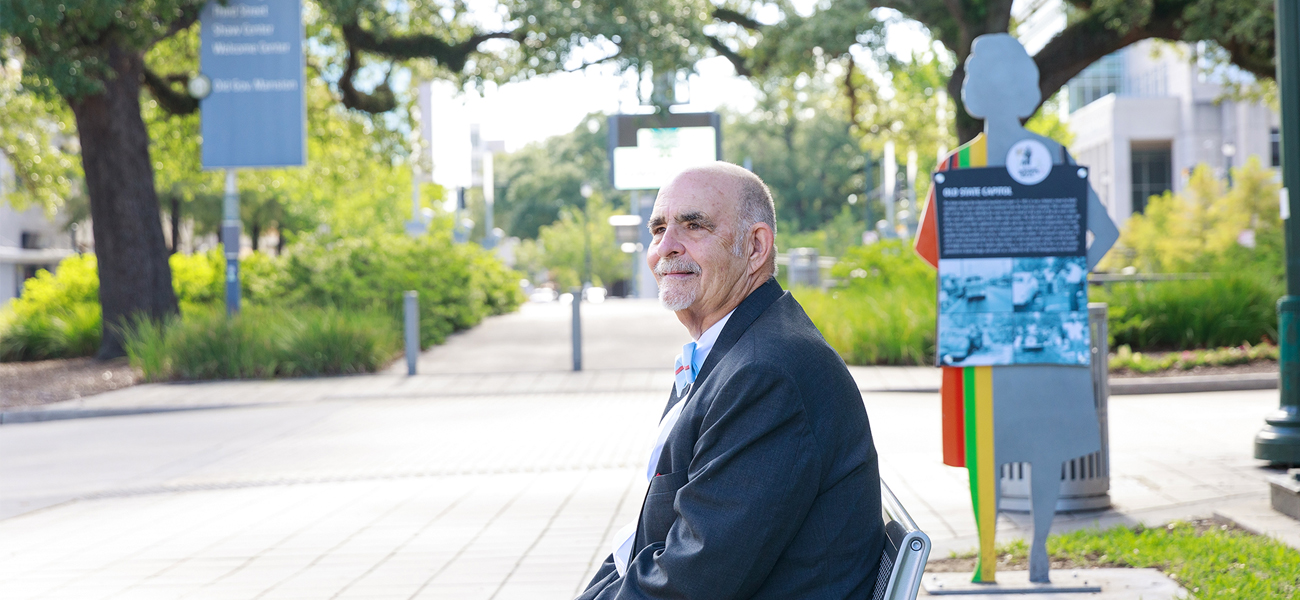
A conversation with Paul Arrigo, as he bids farewell to Visit Baton Rouge
When he retires at the end of September, Paul Arrigo, 70, will have been the longest serving president and CEO of the Capital City’s destination marketing agency, Visit Baton Rouge.
225 sat down with Arrigo, an affable New Orleanian who has lived in Baton Rouge longer than his native Crescent City and plans to remain here after retirement.
After working in the New Orleans tourism industry, Arrigo moved to Baton Rouge in 1997, and served for five years as vice president of sales and marketing for Visit Baton Rouge before being named head of the agency in 2002. He wasn’t the board of directors’ unanimous choice.
|
|
“It was a resounding 5-4 vote,” Arrigo recalls. That served as an invitation to prove naysayers wrong, he says. “The first couple years were tough, but I kept swatting flies, and I had a great team.”
Under his tenure, Baton Rouge has seen several wins in tourism and convention bookings, and has become a worthy competitor against peer cities, thanks to more downtown amenities, improved hotel capacity city-wide, broader arts offerings and a booming restaurant scene.
But challenges remain. As Visit Baton Rouge focuses on attracting new visitors, it must navigate increased city-wide crime and traffic.
Answers have been edited for clarity and brevity.
So, you grew up in New Orleans?
Yeah. I’m a Y’at from Gentilly. My grandparents on my father’s side came from Sicily. My grandfather had a farm in Gentilly and built a bunch of double shotguns, of which we lived in one—my mother, father and brother and I. My daddy was a longshoreman. I get my work ethic from him, and from my mother, her sense of humor. She was all about whoopee cushions, exploding cigarettes, the whole deal.
Did you bring that sense of humor to the workplace?
When I first came here as vice president of sales and marketing, I told the staff: Don’t get mad about anything, and have fun. If you can’t have fun, go and find something else to do. We have an incredible staff. Some of them who were with me in the very beginning are still here.
When you look back on your tenure, what are you most proud of?
You know people say, ‘You’re good at what you do.’ No, I’m lucky. I’m very fortunate. We had the Parade of Champions in 2004, the Miss Teen USA pageant in 2005, the United States Bowling Congress that year—Baton Rouge did a great job of absorbing changes and newcomers after Katrina. We’ve had the Marucci World Series, Travel South USA, youth soccer championships, the creation of the Baton Rouge Film Commission, and most recently we had Garth Brooks in Tiger Stadium, with 102,000 tickets sold in two hours and a registered earthquake at the performance.
Who are our competitors, in terms of other cities?
We are not going for the same tourism or convention market as New Orleans, nor should we. We are a completely different market. We stand up well against other capital cities, like Little Rock; Jackson, Mississippi; Columbia, South Carolina; and Tallahassee, which also has two major universities and is a state capital. And we look at places like Birmingham, as well as Memphis and Fort Worth, for comparisons, too. But also, we are becoming a medical destination for smaller surrounding communities. And we have done well in the convention space. Part of our strategic plan is to improve facilities like the River Center, so that we can continue to get those bookings.
Visit Baton Rouge turned 50 last year. How did you mark the milestone?
We celebrated with a new mural on the side of our building on Third Street. It’s a postcard-style mural, and we worked with the Arts Council of Greater Baton Rouge to find artist Kayla Newman, who is part of a national program called Murals on the Move. It’s highly visible and has been a place where people love to take pictures and share them on social media.
Tell us about the Capital Cocktail?
For our anniversary, we also worked with the Bourbon Society of Baton Rouge to hold a contest for a signature cocktail. The winner, Aaron Bertrand, created an Old Fashioned-style cocktail that has local molasses, honey and blackberries.
We have a lot of challenges in Baton Rouge right now, including traffic. Has that changed how Visit Baton Rouge does business?
Yes, we’re now into ‘product development,’ meaning we no longer just take what we have, but try to collaborate with our partners in the city to improve it. That includes working on city issues, like homelessness and panhandling, as well as improving and upscaling facilities, like the River Center. We’re also looking at transportation logistics. They’re going to be widening the interstate—it’s going to be a zoo, and we’re going to have the bowlers in town again. We need to work with BRAC and DOTD to make sure our visitors can get around. Because if you can’t get through Baton Rouge, you can’t get to Baton Rouge.
What do you plan to do in retirement?
People tell me I should be a consultant—but that’s a job, and if I wanted a job, I’d keep working. The first thing I’ll do is work on some home improvement projects. We have a 27-year-old daughter in New Orleans who is a nurse practitioner, so I’d like to spend more time visiting her. We’re staying in Baton Rouge. My brother lives here. And ironically, my parents who have since passed on, wound up here, and so did part of my wife’s family after Katrina. I’m staying.
The future of Visit Baton Rouge

Meet Jill Kidder, the Baton Rouge travel executive who succeeds Arrigo
Taking over for Arrigo is Jill Kidder, who has most recently held the post of president and CEO of the Louisiana Travel Association, the Baton Rouge-based trade association for statewide travel. Kidder is a registered travel industry lobbyist and has more than 37 years of experience in hospitality, tourism, marketing, management and economic development. Kidder was asked by Gov. John Bel Edwards to co-chair the Resilient Louisiana Commission’s Hospitality and Tourism Task Force, a group created to help the tourism industry respond to the impacts of the pandemic, as well as future disruptions. She also worked with other U.S. travel professionals to help secure $87.5 million in federal funding for the industry through the American Rescue Plan. “I’ve known Jill for years,” says Arrigo, who will overlap with Kidder for six weeks as he hands off the baton. “It’s going to be an excellent transition, and I think she’s going to advocate for the organization.”
This article was originally published in the August 2022 issue of 225 magazine.
|
|
|
